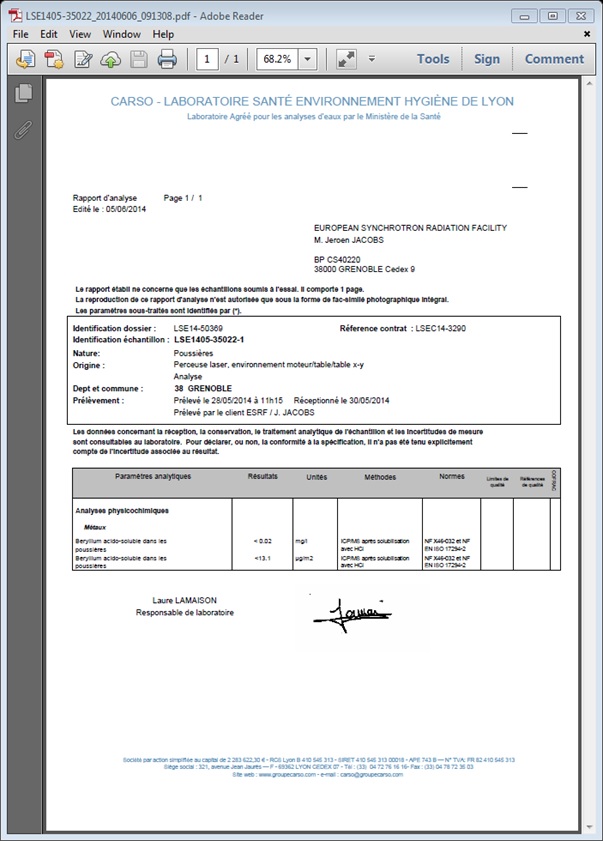Laser Drill
Laser drilling of non-toxic and toxic gaskets at the ESRF
The SESS-HP laser drilling facility is located in the SESS-HP-lab, sector 21.0.12&13.
The laser drilling facility is for public use. It can be employed by any ESRF staff member or user after a short training period.
The machine is to be used exclusively for machining materials allowed by the ESRF safety group. These include: stainless steel, tungsten and rhenium. Written authorisation from the safety group (Martine Moroni) must be obtained before machining any other materials.
Download the Laser Drill Instructions here (word document).
Machining of beryllium (Be) gaskets:
A written request (jeroen.jacobs@esrf.fr, or call 04 76 88 21 99) must be made to use the laser drill facility with toxic materials, like beryllium.
Beryllium gaskets (Fig.1), to be used during special high pressure experiments with dedicated diamond anvil cells (DAC), such as PANO-DAC (SESS) or (Paderborn-Panoramic DAC) can be provided, if necessary by the SESS-HP (contact jeroen.jacobs@esrf.fr, 04 76 88 21 99).
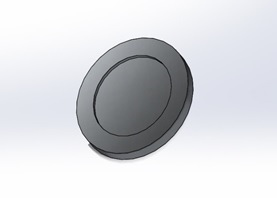
Fig. 1. Beryllium gasket. Outside diameter 5mm, thickness 500µm. Inner diameter 3.5mm, thickness 200µm.
The following procedure must be used for the machining of beryllium gaskets:
A special adapter chamber has been designed for the laser drilling of beryllium. This chamber prevents the Be-powder polluting the laser drill device, and more importantly, from creating a health risk to all users of this device.
This special chamber uses the same magnetic kinematics mount as the standard laser-drill gasket holder and therefore does not require any modification in the present laser drill setup (Fig. 2).
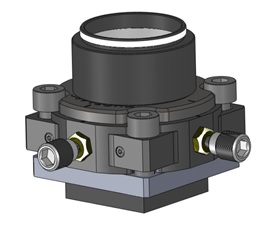
Fig. 2. Enclosed holder for laser drilling of Be gaskets.
The Be-gasket is usually indented by diamonds with culets of around 350 µm to the thickness of 20-60 µm. After an indentation procedure, the gasket is placed inside the closed chamber designed for the laser drilling. The enclosure consists of two parts, connected with an SM1 thread (Fig. 3).
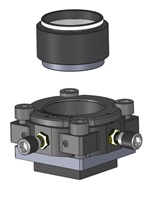
Fig.3.
The bottom part never comes into contact with beryllium and is considered as non-contaminated. The top part containing the beryllium gasket is fully sealed (Fig. 4) and can only be opened and closed inside a designated glove-box approved for Be use. Under these safe conditions the chamber is opened and the gasket can be cleaned with acetone. All the contaminated waste goes into the special waste container.
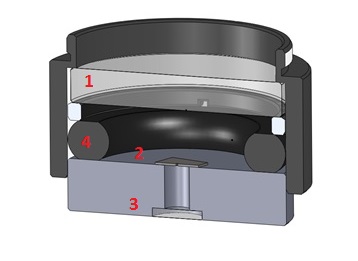 |
|
Fig. 4. A section view of the sealed part with the Be gasket. 1 – Top 4-mm thick sapphire window for the IR laser sealed with the standard lens retaining ring. 2 – Be gasket 3 – Bottom 1-mm thick sapphire window for back illumination, sealed with a cyanoacrylate glue. 4 – Viton O-ring which makes the seal between window and gasket. |
When the next gasket is ready for drilling, it has to be put inside the glove-box, where it is fixed inside a chamber. The chamber is closed and all the outside surfaces are cleaned.
When the chamber leaves the glove-box, it can be taken to a laser drill setup. After a hole is drilled, the chamber is again returned to the glove-box, where it can be opened and cleaned. All Be-contaminated waste is kept inside this glove-box.
This method of preparing a Be- gasket is more efficient than with a spark-erosion machine, which is much slower and less accurate. Spark erosion also produces greater potentially toxic waste (petrol, dirty ethanol for cleaning the machine).
The chamber described has been used since 07/2013, recent laboratory tests** (CARSO – Laboratoire santé environment hygiene de Lyon) have showed that no Beryllium parts have been found on and around the sample area.
We can there for conclude that the adapter chamber is completely closed.
* Results Laboratory test done end May 2014
Note: Estimations of the Be amount removed during the hole drill: Typical gasket hole diameter is ~ 0.12 mm, and typical gasket indentation thickness is ~ 0.03 mm. Total removed material volume is therefore ~3.4x10-7 cm3 that corresponds to = 6.3x10-7g (0.0006 mg) of Be. Laser spot size is about 7 microns in diameter, so the total amount of Be evaporated during laser drilling is ~8.4x10-8 cm3 = 1.5x10-7 g (0.00015 mg) of beryllium.
Used Beryllium: I-70 (contains 99.2% of Be, 0.7% - BeO, 0.06 % - Fe, 0.01% - Al).
Persons authorised to drill beryllium gaskets :
- Jeroen Jacobs (SESS)
- Innokenty Kantor (ID24)
- Ilya Kupenko (ID18)
